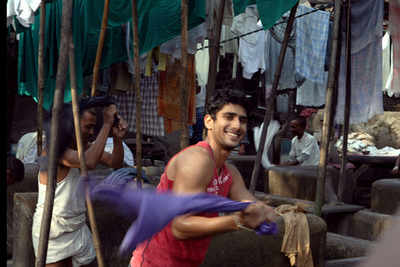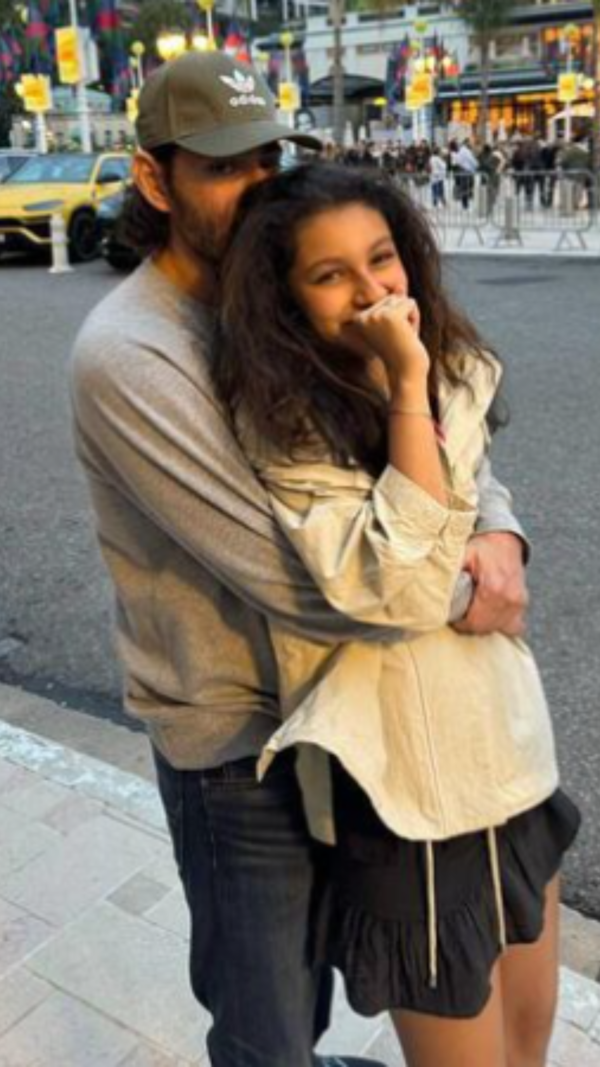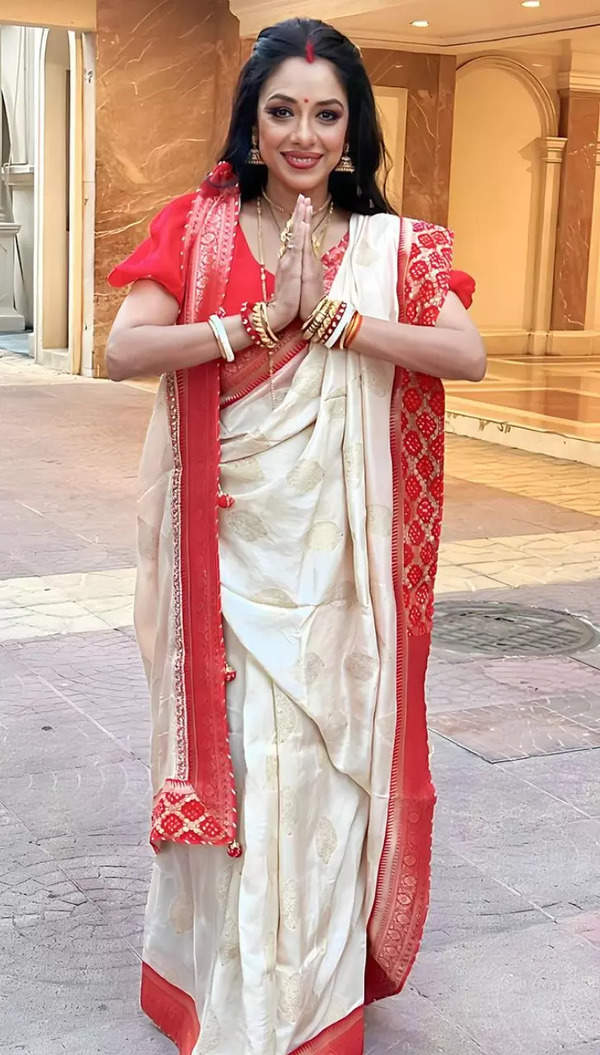- News
- entertainment
- hindi
- bollywood
- Changing face of Mumbai in Hindi cinema
Trending
This story is from October 28, 2014
Changing face of Mumbai in Hindi cinema
Mumbai has been a backdrop for many films but its definition in these films has changed over the years

Mumbai has been a backdrop for many films but its definition in these films has changed over the years.
The allure of the city of Mumbai as a subject of film scarcely evades film-makers even those who are below the age of 25. The recently concluded Mumbai Film Festival showcased twenty short films centring on Mumbai by young and promising film-makers below the age of 25.Slotted under a broad category Dimensions Mumbai,” these short films explored various aspects of the city of Mumbai. Three films stood out in their representation of Mumbai and its people.
Bombay 70 made by Disha Randani, which bagged the best short film award at the festival, centres on failed attempts of a young man to live a dignified life. This young man has maligned the name of his esteemed grandfather. The city, which on crucial occasions can be cold and not-so-generous in accepting of its people, makes him happy and frustrated. He chooses music to vent out what the city has given him. The second best film award went to Unfit made by Srishti Jain. It deals with the experience of a man who comes from the Faizabad district of Uttar Pradesh to the city of dreams. It focuses on how the fast pace of life in the city is in complete contrast with the character’s earlier life. The third film which received special mention by the jury at the festival is Selfie made by Ramchandra Gaonkar. Selfie is the story of two men who find themselves in similar circumstances and how one slips deeper and deeper into the tendency to doubt his ability to deal with the circumstances and how another copes with the similar circumstances confidently.
These three films look at Mumbai in three exclusive perspectives: insider, outsider and existential. These are a few of the myriad perspectives the city has offered film-makers and other artists. It seems that the affair of film-makers with the city of Mumbai is an unending one. Mumbai is a muse that never fails its creative artists. She dogs you, ensnares you, engulfs you and retains in you what you need and purges you of that exalted sense of life. More so, it seems that the more you peel off the layers, this city acquires as it jostles for survival in that tight little space of tranquility, it becomes more and more captivating in every aspect. In fact, Hindi cinema owes a lot to this city. After shifting its base from Lahore to Bombay (Now Mumbai), the city has provided a wide range of fascinating gallery of films which have touched us in ways more than one. These films have made us think, re-think and assess the way we live and treat people around us.
Subsequently, there came a series of films in which Mumbai played an important character. The only factor that came in way of classifying these films as pure representation of Mumbai and its culture was the language spoken in these films. The characters would be placed in Mumbai milieu but the language they spoke would not be bambaiyya. They would speak in Urdu, Hindustani or sometimes a Hindi which was distinct to their native. For instance, in the 1954 released film Aar Paar directed by Guru Dutt, the hero spoke Hindi with the dialect of Madhya Pradesh. Abrar Alvi was once quoted as saying, “The hero uses the word Yaar which was so common in the way Hindi was spoken in Madhya Pradesh. It defined the geography from which he came from.”
It was only in the middle of the 1970s that Mumbai as a character, its culture and language began emerging in Hindi films. The film Deewar, which was released in 1975, written by Salim-Javed depicted Mumbai, its people and its language in a faithful manner to a large extent. It went straight into the plight of Mumbai’s poor man and his challenges. Besides this, Basu Chatterjee’s films such as Rajnigandha (1974), Choti Si Baat (1976) and Baaton Baaton Main (1979) also provided a foray into the way urban middle class of Mumbai made a living. It presented the sensitive and delicate part of the city, which was not as cold and distant to the middle class as to the outsider in the city.
Interestingly, in the late ‘70s, two films presented Mumbai’s two extreme classes in a very realistic way. Muzzaffar Ali’s film Gaman made in 1978 depicted the plight and struggles of an outsider who comes into the city to earn more and becomes a taxi driver. He however is disillusioned and is ensnared in the city. Saeed Akhtar Mirza’s film Arvind Desai Ki Ajeeb Dastaan, released in 1978, presented the existential crisis of a son of rich Mumbai businessman who fails in his attempts to find meaning in his life. It is in this film the streets and the milieu of Mumbai has received its due importance.
The 1980s and 1990s were the decades where film and film-makers began deconstructing Mumbai in a deeper way. Be it the language, the clothes, the gestures and more importantly stories emerged from Mumbai itself. Saeed Akhtar Mirza’s film Albert Pinto Ko Gussa Kyon Ata Hai released in 1980 went straight into the houses of Mumbai’s Catholic people and spoke the language they spoke. Also Sai Paranjpe’s film Katha that released in 1983 was about the middle class Mumbaikars who lived in chawls and dealt with each other’s needs and expectations. Films that dealt with specific communities of Mumbai also got released in this period. Most notable of them is Vijaya Mehta’s film Pestonjee which provided a closer look at the Parsi community of 1950s and 1960s of Mumbai.
In the late 1980s, when joblessness increased due to indefinite textile strike of 1982, the gap between the haves and haves-not widened considerably. It was then that the young men belonging to jobless mill workers took to nefarious activities and formed Mumbai’s underworld. There came films which gave realistic portrayal of underworld, prostitution, corruption and other evils of the city. One of the early films in the late 1980s that focussed on lives of people of the street of Mumbai was Mira Nair’s Salaam Bombay, released in 1988. This was followed by Vidhu Vinod Chopra’s gritty crime drama Parinda which got released in 1989. It paved the way for realistic crime films in Hindi cinema in the years to come.
In the middle of 1990s, the language of the street of Mumbai began emerging in Hindi films in the most authentic way. The film Rangeela which was released in 1995 gave the viewers the flavour of Mumbai’s language. Sanjay Chhel who co-wrote dialogues of Rangeela says, “Rangeela brought about the ethos of Mumbai. Here was the hero who spoke in the language which people in streets, shops and markets of Mumbai spoke. It was a lively way of expression without much sophistication and articulation.” The film connected with the audience immensely. It was in the same year that Mani Ratnam’s Bombay presented the destruction and sufferings of Mumbai in the backdrop of Mumbai riots of 1992-93 got released and met with critical acclaim.
In the late 1990s, however, there came a sea change in which Mumbai would be depicted in films. With the release of underworld film Satya in 1998, Hindi cinema again went into the interiors of Mumbai and showed us that gangsters are among us and they don’t live in far-off inaccessible dark corners of the city. In the late 1990s also, there came a wave of films which catered to the Indian Diaspora and the presence of Mumbai and its people in Hindi cinema became lesser.
However, in early 2000s, Mumbai again reappeared in Hindi films. This time it was the elite part of Mumbai which got prominence. In 2001, with the release of the film Dil Chahta Hain, the camaraderie shown among friends grown up in posh localities of Mumbai came out fresh and was met with success. In the late 2000s, two films showed Mumbai in two extreme perspectives. In 2007, the film Ek Chalis Ki Last Local delighted the viewers from the rollercoaster experience of a young working call centre worker who, like many, benefited from the opening of the economy which made India an outsourcing hub, while in 2008 Nishikant Kamat’s film Mumbai Meri Jaan showed the deep-seated fears, concerns, misconceptions and biases of Mumbaikars. Interestingly, at the end of the decade in 2010, Kiran Rao’s film Dhobi Ghat was a bold attempt at presenting stories that linked the haves and the haves-not in an engaging way. It established the connection between the people living in the streets of Mumbai and its plush localities.
In the coming years, two films are set to release with Mumbai in their backdrops. These are Bombay Velvet and Peddlers. It seems that Indian cinema’s love affair with Mumbai continues. Mumbai continues to haunt, inspire and nudge the creative energies of film-makers. Scriptwriter Sanjay Chhel says, “If anyone has to make a pan-India film, Mumbai has to be its backdrop. It is a cosmopolitan city where all festivals such as Ganpati, Christmas, Diwali and Eid are celebrated with equal gusto. For any film-maker, Mumbai provides that food thali where there is everything for everyone.”
The allure of the city of Mumbai as a subject of film scarcely evades film-makers even those who are below the age of 25. The recently concluded Mumbai Film Festival showcased twenty short films centring on Mumbai by young and promising film-makers below the age of 25.Slotted under a broad category Dimensions Mumbai,” these short films explored various aspects of the city of Mumbai. Three films stood out in their representation of Mumbai and its people.
Bombay 70 made by Disha Randani, which bagged the best short film award at the festival, centres on failed attempts of a young man to live a dignified life. This young man has maligned the name of his esteemed grandfather. The city, which on crucial occasions can be cold and not-so-generous in accepting of its people, makes him happy and frustrated. He chooses music to vent out what the city has given him. The second best film award went to Unfit made by Srishti Jain. It deals with the experience of a man who comes from the Faizabad district of Uttar Pradesh to the city of dreams. It focuses on how the fast pace of life in the city is in complete contrast with the character’s earlier life. The third film which received special mention by the jury at the festival is Selfie made by Ramchandra Gaonkar. Selfie is the story of two men who find themselves in similar circumstances and how one slips deeper and deeper into the tendency to doubt his ability to deal with the circumstances and how another copes with the similar circumstances confidently.
These three films look at Mumbai in three exclusive perspectives: insider, outsider and existential. These are a few of the myriad perspectives the city has offered film-makers and other artists. It seems that the affair of film-makers with the city of Mumbai is an unending one. Mumbai is a muse that never fails its creative artists. She dogs you, ensnares you, engulfs you and retains in you what you need and purges you of that exalted sense of life. More so, it seems that the more you peel off the layers, this city acquires as it jostles for survival in that tight little space of tranquility, it becomes more and more captivating in every aspect. In fact, Hindi cinema owes a lot to this city. After shifting its base from Lahore to Bombay (Now Mumbai), the city has provided a wide range of fascinating gallery of films which have touched us in ways more than one. These films have made us think, re-think and assess the way we live and treat people around us.
For a long time, Mumbai has been the El Dorado of India. Though today, as newer cities are emerging, this point of view is debatable. In the 1950s, for film-makers, the city served as a door to the World. The first film that showed the streets of Mumbai was Taxi Driver. Made in 1954 by the progressive Chetan Anand, it took the viewers to the long streets of Mumbai and brought them closer to the world they lived in. Rafique Baghdadi, a veteran film critic and historian on Mumbai, says, “In those days, most film-makers would use heavy camera to shoot. Chetan Anand got hold of a light camera and went on the streets of Mumbai and shot Taxi Driver.” In Taxi Driver, the city of Mumbai was a character. It was about a budding singer who is helped by a sensitive and large-hearted taxi driver in meeting her mentor who turns out to be a man with criminal connections. It turns out that she starts staying with the taxi driver and they fall in love. This is one of the most realistic portrayals of Mumbai. However, it was in 1955 that ace film-maker Raj Kapoor’s Shree 420 depicted what the city of dreams and opportunities can be. The film provided a template for many films in the years to come. A simpleton, Raju comes from an unknown idealistic place to Mumbai and the city in its enticing splendour of money and fame changes him into a person he hates.
Subsequently, there came a series of films in which Mumbai played an important character. The only factor that came in way of classifying these films as pure representation of Mumbai and its culture was the language spoken in these films. The characters would be placed in Mumbai milieu but the language they spoke would not be bambaiyya. They would speak in Urdu, Hindustani or sometimes a Hindi which was distinct to their native. For instance, in the 1954 released film Aar Paar directed by Guru Dutt, the hero spoke Hindi with the dialect of Madhya Pradesh. Abrar Alvi was once quoted as saying, “The hero uses the word Yaar which was so common in the way Hindi was spoken in Madhya Pradesh. It defined the geography from which he came from.”
It was only in the middle of the 1970s that Mumbai as a character, its culture and language began emerging in Hindi films. The film Deewar, which was released in 1975, written by Salim-Javed depicted Mumbai, its people and its language in a faithful manner to a large extent. It went straight into the plight of Mumbai’s poor man and his challenges. Besides this, Basu Chatterjee’s films such as Rajnigandha (1974), Choti Si Baat (1976) and Baaton Baaton Main (1979) also provided a foray into the way urban middle class of Mumbai made a living. It presented the sensitive and delicate part of the city, which was not as cold and distant to the middle class as to the outsider in the city.
Interestingly, in the late ‘70s, two films presented Mumbai’s two extreme classes in a very realistic way. Muzzaffar Ali’s film Gaman made in 1978 depicted the plight and struggles of an outsider who comes into the city to earn more and becomes a taxi driver. He however is disillusioned and is ensnared in the city. Saeed Akhtar Mirza’s film Arvind Desai Ki Ajeeb Dastaan, released in 1978, presented the existential crisis of a son of rich Mumbai businessman who fails in his attempts to find meaning in his life. It is in this film the streets and the milieu of Mumbai has received its due importance.
The 1980s and 1990s were the decades where film and film-makers began deconstructing Mumbai in a deeper way. Be it the language, the clothes, the gestures and more importantly stories emerged from Mumbai itself. Saeed Akhtar Mirza’s film Albert Pinto Ko Gussa Kyon Ata Hai released in 1980 went straight into the houses of Mumbai’s Catholic people and spoke the language they spoke. Also Sai Paranjpe’s film Katha that released in 1983 was about the middle class Mumbaikars who lived in chawls and dealt with each other’s needs and expectations. Films that dealt with specific communities of Mumbai also got released in this period. Most notable of them is Vijaya Mehta’s film Pestonjee which provided a closer look at the Parsi community of 1950s and 1960s of Mumbai.
In the late 1980s, when joblessness increased due to indefinite textile strike of 1982, the gap between the haves and haves-not widened considerably. It was then that the young men belonging to jobless mill workers took to nefarious activities and formed Mumbai’s underworld. There came films which gave realistic portrayal of underworld, prostitution, corruption and other evils of the city. One of the early films in the late 1980s that focussed on lives of people of the street of Mumbai was Mira Nair’s Salaam Bombay, released in 1988. This was followed by Vidhu Vinod Chopra’s gritty crime drama Parinda which got released in 1989. It paved the way for realistic crime films in Hindi cinema in the years to come.
In the middle of 1990s, the language of the street of Mumbai began emerging in Hindi films in the most authentic way. The film Rangeela which was released in 1995 gave the viewers the flavour of Mumbai’s language. Sanjay Chhel who co-wrote dialogues of Rangeela says, “Rangeela brought about the ethos of Mumbai. Here was the hero who spoke in the language which people in streets, shops and markets of Mumbai spoke. It was a lively way of expression without much sophistication and articulation.” The film connected with the audience immensely. It was in the same year that Mani Ratnam’s Bombay presented the destruction and sufferings of Mumbai in the backdrop of Mumbai riots of 1992-93 got released and met with critical acclaim.
In the late 1990s, however, there came a sea change in which Mumbai would be depicted in films. With the release of underworld film Satya in 1998, Hindi cinema again went into the interiors of Mumbai and showed us that gangsters are among us and they don’t live in far-off inaccessible dark corners of the city. In the late 1990s also, there came a wave of films which catered to the Indian Diaspora and the presence of Mumbai and its people in Hindi cinema became lesser.
However, in early 2000s, Mumbai again reappeared in Hindi films. This time it was the elite part of Mumbai which got prominence. In 2001, with the release of the film Dil Chahta Hain, the camaraderie shown among friends grown up in posh localities of Mumbai came out fresh and was met with success. In the late 2000s, two films showed Mumbai in two extreme perspectives. In 2007, the film Ek Chalis Ki Last Local delighted the viewers from the rollercoaster experience of a young working call centre worker who, like many, benefited from the opening of the economy which made India an outsourcing hub, while in 2008 Nishikant Kamat’s film Mumbai Meri Jaan showed the deep-seated fears, concerns, misconceptions and biases of Mumbaikars. Interestingly, at the end of the decade in 2010, Kiran Rao’s film Dhobi Ghat was a bold attempt at presenting stories that linked the haves and the haves-not in an engaging way. It established the connection between the people living in the streets of Mumbai and its plush localities.
In the coming years, two films are set to release with Mumbai in their backdrops. These are Bombay Velvet and Peddlers. It seems that Indian cinema’s love affair with Mumbai continues. Mumbai continues to haunt, inspire and nudge the creative energies of film-makers. Scriptwriter Sanjay Chhel says, “If anyone has to make a pan-India film, Mumbai has to be its backdrop. It is a cosmopolitan city where all festivals such as Ganpati, Christmas, Diwali and Eid are celebrated with equal gusto. For any film-maker, Mumbai provides that food thali where there is everything for everyone.”
End of Article
FOLLOW US ON SOCIAL MEDIA









